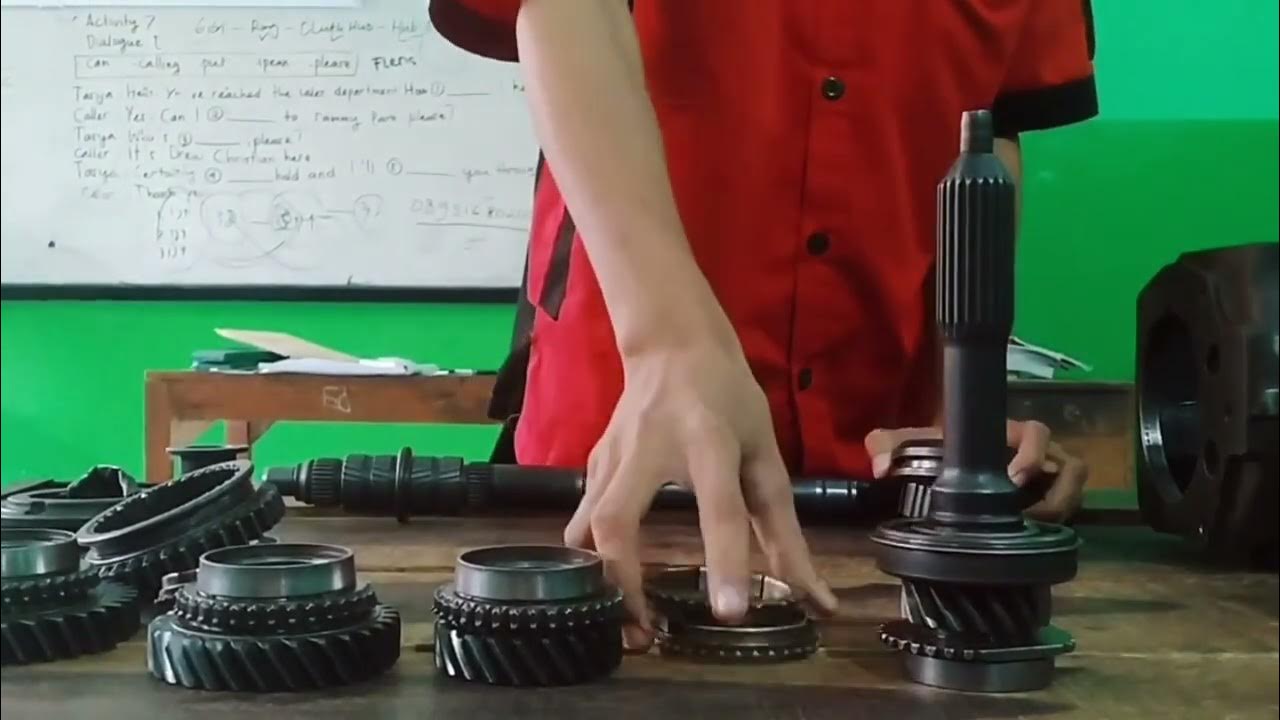How To Drive A Manual Transmission + Rev Match + Heel Toe Downshift (POV Tutorial)
Summary
TLDRThis video is a comprehensive beginner's guide to driving a manual transmission (stick shift). It covers essential concepts, from understanding the clutch, throttle, and gears to executing basic maneuvers like starting, stopping, shifting, and rev matching. The instructor emphasizes patience, balance, and timing, explaining the mechanics behind each step. The tutorial also introduces more advanced techniques such as downshifting and heel-toe braking without overwhelming the learner, making it an ideal resource for anyone eager to master driving a manual car.
Takeaways
- 🚗 Manual transmissions require the driver to shift gears manually, unlike automatic transmissions.
- 🦶 The clutch pedal separates the engine from the transmission, allowing gear changes.
- 🔧 The gear shift typically follows an H-pattern, where each gear position is mapped on the stick shift.
- 🚨 Starting a car with a manual transmission involves pressing the clutch to ensure the engine is disconnected from the transmission.
- 🔄 To start moving, the driver slowly releases the clutch without applying throttle to feel where the clutch engages.
- ⚙️ Shifting gears smoothly involves pressing the clutch, shifting to the desired gear, and matching the speed of the flywheel and transmission.
- 🚦 Learning to stop is essential: Press the clutch and brake to stop the car without stalling.
- 🏞️ On hills, a little throttle is necessary when releasing the clutch to prevent rolling back.
- ⬇️ Downshifting requires matching the engine's revs (rev-matching) to the lower gear to avoid a jerky transition.
- 👟 Heel-toe downshifting allows the driver to brake and rev-match simultaneously, offering smoother deceleration during shifts.
Q & A
What is the main difference between an automatic and a manual transmission?
-In a manual transmission, the driver is responsible for shifting gears, whereas in an automatic transmission, the car shifts gears automatically.
What is the purpose of the clutch pedal in a manual car?
-The clutch pedal separates the engine from the transmission, allowing the driver to shift gears by disconnecting the engine's power from the wheels.
What happens when you press the clutch while driving at 80 mph?
-When you press the clutch at high speed, you separate the engine from the transmission, meaning the car is no longer being powered by the engine, but it will continue to roll.
What is a 'neutral jiggle' and why is it important when starting a manual car?
-A neutral jiggle is the process of checking if the car is in neutral by moving the gear shifter side to side. It’s important to ensure the car won’t lunge forward or backward when you start the engine.
What should you do if the car is rolling and you need to stop quickly?
-To stop quickly, press the clutch and brake simultaneously. This separates the engine from the transmission and allows you to stop safely.
Why is it important to avoid resting your foot on the clutch while driving?
-Resting your foot on the clutch can wear out the throw-out bearing prematurely and reduce the longevity of the clutch.
Why does the instructor recommend learning how to roll the car using only the clutch on flat ground first?
-This exercise helps drivers learn the clutch's engagement point and how to start moving without adding throttle, which is crucial for gaining control over the vehicle.
What is 'rev matching,' and why is it important when downshifting?
-Rev matching is the technique of increasing the engine speed before downshifting to ensure the engine speed matches the transmission speed, preventing a lurch or drag when engaging the lower gear.
What is 'heel-toe downshifting'?
-Heel-toe downshifting is a technique where the driver uses their foot to brake while simultaneously blipping the throttle with the side of their foot to rev match during a downshift.
Why does shifting into third gear sometimes feel challenging for new drivers?
-Third gear can be tricky for beginners because it requires precise alignment in the gear pattern to avoid accidentally shifting into fifth gear (causing the car to bog) or first gear (which could over-rev the engine).
Outlines

This section is available to paid users only. Please upgrade to access this part.
Upgrade NowMindmap

This section is available to paid users only. Please upgrade to access this part.
Upgrade NowKeywords

This section is available to paid users only. Please upgrade to access this part.
Upgrade NowHighlights

This section is available to paid users only. Please upgrade to access this part.
Upgrade NowTranscripts

This section is available to paid users only. Please upgrade to access this part.
Upgrade NowBrowse More Related Video

Almanya'da Ehliyet Nasıl Alınır? Türk Ehliyeti, Alman Ehliyetine Nasıl Çevirilir? | Emre Yıldırım

Cara membongkar dan memasang transmisi manual 4 speed...#smkTamtamaKroya.

Myths About Automatic cars 🚗 Watch This Before Buying Automatic Cars

Grow your unit with Just Your Hands - Ultimate Beginners Guide For Penis Enlargement

Comparing Manual Transmission with Automatic & CVT [In Detail]

Macam-Macam Transmisi Kendaraan (Roda 4)
5.0 / 5 (0 votes)